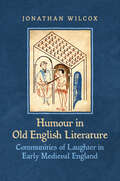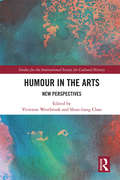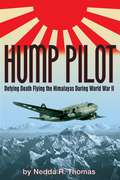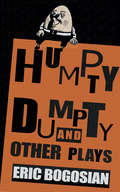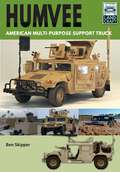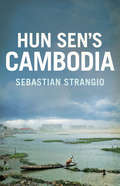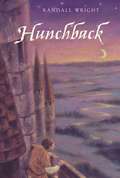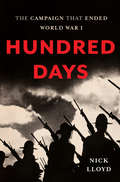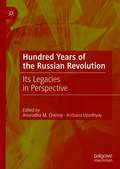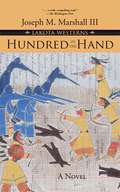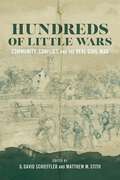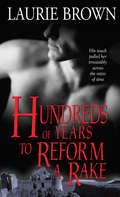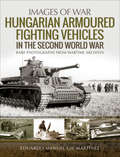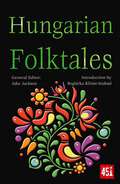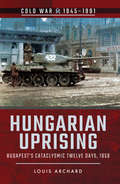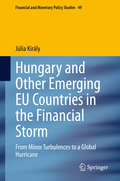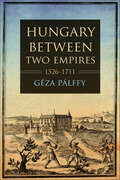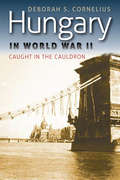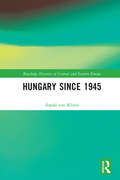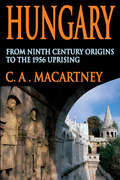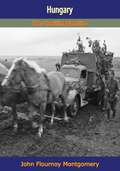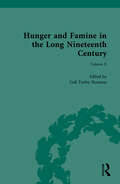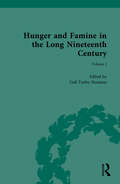- Table View
- List View
Humour in Old English Literature: Communities of Laughter in Early Medieval England
by Jonathan WilcoxHumour in Old English Literature deploys modern theories of humour to explore the style and content of surviving writing from early medieval England. The book analyses Old English riddles, wisdom literature, runic writing, the deployment of rhymes, and humour in heroic poetry, hagiography, and romance. Drawing on a fine-tuned understanding of literary technique, the book presents a revisionist view of Old English literature, partly by reclaiming often-neglected texts and partly by uncovering ironies and embarrassments within well-established works, including Beowulf. Most surprisingly, Jonathan Wilcox engages the large body of didactic literature, pinpointing humour in two anonymous homilies along with extensive use in saints’ lives. Each chapter ends by revealing a different audience that would have shared in the laughter. Wilcox suggests that the humour of Old English literature has been scantily covered in past scholarship because modern readers expect a dour and serious corpus. Humour in Old English Literature aims to break that cycle by highlighting works and moments that are as entertaining now as they were then.
Humour in the Arts: New Perspectives (Studies for the International Society for Cultural History)
by Shun-Liang Chao Vivienne WestbrookThis collection demonstrates the usefulness of approaching texts—verbal, visual and aural—through a framework of humour. Contributors offer in-depth discussions of humour in the West within a wider cultural historical context to achieve a coherent, chronological sense of how humour proceeds from antiquity to modernity. Reading humorously reveals the complexity of certain aspects of texts that other reading approaches have so far failed to reveal. Humour in the Arts explores humour as a source of cultural formation that engages with ethical, political, and religious controversies whilst acquainting readers with a wide range of humorous structures and strategies used across Western cultures.
Hump Pilot
by Nedda R. ThomasNedda R. Thomas flies her father's war through his remembrance in her superlative biography, "Hump Pilot: Defying Death Flying the Himalayas in World War II." In a lucid, informative, well-paced style she conveys the surreal beauty and deadly dangers of the Hump Theater, a story of courage and historical significance that takes our hearts into the sky. A seminary-trained spiritual director, Nedda grew up in the U.S., Paris, France, and the Far East. She has the rare distinction of being one of the very few women ever to write about men on combat-rated air missions in that world conflict. Her articles explore the work of a variety of creative and well-known figures. A poet and former editor, she speaks on military and women's history, and always, her passion for human rights, particularly for exploited children.
Humpty Dumpty and Other Plays
by Eric BogosianEric Bogosian is one of our most singular and exhilarating commentators on American life. His award-winning solo performance works have been performed with acclaim all over the world. As the New York Times has pointed out, "Bogosian is a born storyteller with perfect pitch." That is never more evident than in his newest book, which collects his three most recent plays. In Humpty Dumpty, five friends gather for a holiday at a mountain getaway where unforeseen events bring them to the brink of the end of the world; Griller, set in a New Jersey backyard, where a barbecue gathering turns sinister and deadly; and Red Angel, Bogosian's riff on Von Sternberg's The Blue Angel, reset on a college campus in 1990s New England."I want theater to wake me up, not lull me to sleep. My theater is not about fantasy, it's not about seduction. My theater is not an outline for a film. It is not a TV sitcom onstage. I want my theater to be an event. I want it to push limits, bite the hand that feeds it and bang heads. It's about my fears, my ideas, my blind spots, my isolation."--Eric BogosianEric Bogosian is the author of five plays including Talk Radio and subUrbia, as well as three Obie Award-winning solos: Drinking in America; Sex, Drugs, Rock & Roll; Pounding Nails in the Floor with My Forehead and his most recent, Wake Up and Smell the Coffee, which was nominated for a Drama Desk Award. He wrote the screenplay adaptations of his first two plays, receiving the Berlin Film Festival's "Silver Bear" for his work in Talk Radio. Simon and Schuster will publish his second novel in 2005.
Humvee: American Multi-Purpose Support Truck (LandCraft)
by Ben SkipperWith its characteristic wide track, low silhouette and its distinctively deep exhaust note the Humvee sets itself apart from the range of light utility trucks it replaced. Fully air-portable, the Humvee features an aluminum body seated on a steel ladder chassis, powered by a 190hp V8 engine. Introduced into service in 1985, the Humvee remained pretty much unnoticed until its baptism of fire during the invasion of Panama in Operation Just Cause. It wasn’t until almost a year later, in Operation Desert Shield and Desert Storm that the Humvee really came into the public eye. As a result of its newly found fame its manufacturer, American Motors General, started to produce a civilized version for public consumption, with sales and profile boosted by Hollywood patronage. At the same time the Humvee continued to serve in some of the most dangerous US operations undertaken to date. From the streets of Mogadishu to the Balkans, the Humvee developed into a vehicle far removed from its original design intentions. With some 17 variants now in service, from the basic troop carrier to the awesome Avenger Anti-Aircraft system, this Humvee LandCraft title provides the modeler with a rich vein of inspirations and subject. This title looks at the process behind the design and development of the Humvee and how American Motors General were able to fulfill a complex design brief to deliver a single vehicle that was able to replace a host of in-service vehicles. This title will chart how the Humvee grew from a light utility truck into a versatile platform whose modesty hides its potential. With its specially designed track, impressive ground clearance, waterproofed electronics and ability to carry a one ton load, the first Humvees were light years ahead of the vehicles they replaced. With its unique suspension and transmission systems to its unique engine arrangement this 4x4 is capable of feats normally only afforded to tracked vehicles. With some 17 versions in US service the Humvee fulfills its traditional role as cargo and troop carrier as well as special-weapons platform, ambulances, Direct Air Support vehicles and communications shelter vehicles. After 35 years of service the Humvee has changed from soft skinned run-about to a lightly armored force protection asset. Fitted with a larger engine, interchangeable armor, specially designed escape windows and a unique blast chimney, the Humvee’s story is indeed proof that development of military vehicles never stops. For the modeler there is nothing more important than the little things and this image-rich section of LandCrafts’ Humvee title delivers the goods. Filled with crisp images that chart the Humvee’s development, combined with informative accompanying text, forms an enviable visual guide for the enthusiast and modeler alike.
Hun Sen's Cambodia
by Sebastian StrangioTo many in the West, the name Cambodia still conjures up indelible images of destruction and death, the legacy of the brutal Khmer Rouge regime and the terror it inflicted in its attempt to create a communist utopia in the 1970s. Sebastian Strangio, a journalist based in the capital city of Phnom Penh, now offers an eye-opening appraisal of modern-day Cambodia in the years following its emergence from bitter conflict and bloody upheaval. In the early 1990s, Cambodia became the focus of the UN’s first great post#150;Cold War nation-building project, with billions in international aid rolling in to support the fledgling democracy. But since the UN-supervised elections in 1993, the nation has slipped steadily backward into neo-authoritarian rule under Prime Minister Hun Sen. Behind a mirage of democracy, ordinary people have few rights and corruption infuses virtually every facet of everyday life. In this lively and compelling study, the first of its kind, Strangio explores the present state of Cambodian society under Hun Sen’s leadership, painting a vivid portrait of a nation struggling to reconcile the promise of peace and democracy with a violent and tumultuous past.
Hunchback
by Randall Wright"You!" shouted a voice from near the willow tree. "Stop!" Hodge heard the jangle of a horse's bridle. He spun about the other way, but a dark shape jumped out of the shadows and knocked him to the ground. Light flashed into his face as a lantern was uncovered. "A spy," hissed the figure. "A stinkin' spy."A glorious adventure of castles, kings, traitors-and one humble hunchback who has to save them all Long ago, Castle Marlby rang with the comings and goings of kings and princes. Now the castle is a quiet, sleepy place where everyone seems to have forgotten those golden days. Everyone but Hodge, that is. Though his hunched back earns him the unlovely job of mucking out the latrine, he dreams of serving a prince someday. But when one finally appears, he is nothing like Hodge expected. Prince Leo is kept hidden away behind locked doors, as if he were in terrible danger. Or is he himself the dangerous one? When Hodge discovers the truth, he tumbles headlong into an adventure that proves far more exciting than he could ever have imagined. It will take all his strength to survive-and all his heart.
Hundred Days: The Campaign That Ended World War I
by Nick LloydIn the late summer of 1918, after four long years of senseless, stagnant fighting, the Western Front erupted. The bitter four-month struggle that ensued--known as the Hundred Days Campaign--saw some of the bloodiest and most ferocious combat of the Great War, as the Allies grimly worked to break the stalemate in the west and end the conflict that had decimated Europe. In Hundred Days, acclaimed military historian Nick Lloyd leads readers into the endgame of World War I, showing how the timely arrival of American men and materiel--as well as the bravery of French, British, and Commonwealth soldiers--helped to turn the tide on the Western Front. Many of these battle-hardened troops had endured years of terror in the trenches, clinging to their resolve through poison-gas attacks and fruitless assaults across no man’s land. Finally, in July 1918, they and their American allies did the impossible: they returned movement to the western theater. Using surprise attacks, innovative artillery tactics, and swarms of tanks and aircraft, they pushed the Germans out of their trenches and forced them back to their final bastion: the Hindenburg Line, a formidable network of dugouts, barbed wire, and pillboxes. After a massive assault, the Allies broke through, racing toward the Rhine and forcing Kaiser Wilhelm II to sue for peace. An epic tale ranging from the ravaged fields of Flanders to the revolutionary streets of Berlin, Hundred Days recalls the bravery and sacrifice that finally silenced the guns of Europe.
Hundred Years of the Russian Revolution: Its Legacies in Perspective
by Anuradha M. Chenoy Archana UpadhyayThe book reflects upon the Russian Revolution of 1917 and the ensuing developments in Russia, the rest of the former Soviet Union, Central and Eastern Europe and elsewhere in the world. It discusses the impact of the legacies of the Russian Revolution on political systems, ideologies, economic and social structures and culture. The book answers some pertinent questions: To what extent are these legacies relevant today for the contextualisation of memory politics, social institutions, and international relations? How does an analysis of 1917 and its legacies contribute to the comparative study of revolutions and social change?
Hundred in the Hand: Lakota Westerns
by Joseph Marshall III(back of book) First in a series of groundbreaking fiction about the American West from the Native American perspective, this riveting novel takes place during the Battle of the Hundred in the Hand, otherwise known as the Fetterman Massacre of 1866. The story is told through the eyes of Cloud, a dedicated warrior who fights alongside a young Crazy Horse, as well as the white soldiers who mistake Cloud's redheaded wife for a captive. Beautifully written and reminiscent of the oral tradition, Hundred in the Hand brings new depth to the story of the battle and the Lakota people.
Hundreds of Little Wars: Community, Conflict, and the Real Civil War (Conflicting Worlds: New Dimensions of the American Civil War)
by Matthew M. Stith G. David SchiefflerFrom Texas to Virginia, towns, regions, counties, regiments, prisons, and even refugee camps played a significant role in shaping the contours of the Civil War. According to historian Daniel E. Sutherland, whose many books and essays helped establish the field of community studies, these varied assemblages of individuals experienced and fought the real war. Following his lead, the contributors to Hundreds of Little Wars reveal how viewing the war from the vantage point of singular communities allows us to better understand the larger conflict. The volume includes contributions from a wide array of Civil War scholars. Lesley J. Gordon and Eric P. Totten examine military outfits, namely the 126th New York Regiment and the 4th New Hampshire Volunteer Infantry. Madeleine C. Forrest provides an analysis of Fauquier County, Virginia, in 1862, and Matthew M. Stith evaluates a Confederate prisoner-of-war camp in East Texas. Christopher Phillips and Scott A. Tarnowieckyi investigate the middle border region spanning the Ohio, Mississippi, and Missouri rivers. Lorien Foote and G. David Schieffler assess the demographically diverse Sea Islands of South Carolina and Georgia, as well as Helena, Arkansas. Barton A. Myers and Terry L. Beckenbaugh employ Sutherland’s framing while considering irregular war, first with an examination of partisan officers and then with a survey of the White River Valley in Arkansas. Finally, Niels Eichhorn and Michael Shane Powers assume a transnational viewpoint, comparing Richmond with Vienna, Austria, and analyzing a community of Confederate veterans in Central America.The essays in Hundreds of Little Wars show that no one single conflict defined the Civil War. Instead, hundreds of wars existed, variously categorized by geography, race, gender, environment, and myriad other factors. Only by concentrating on these communities can we grasp the scope and complexity of the Civil War.
Hundreds of Years to Reform a Rake
by Laurie BrownA modern career woman thrust back in time into the glittering Regency period and the arms of an unscrupulous rake. . . Josephine Drummond is a professional paranormal researcher (aka, a ghostbuster) hired to prove that the ghost of Lord Deverell Thornton, the very handsome Earl and a notorious rake in his time, haunts the crumbling Waite Castle. But the ghost drags Josephine back to the Regency period to help him try to prevent the swindle that impoverished the Earl and threatens to turn his castle into a most undignifiedmodern-day tourist attraction. Josephine has to contend with being a modern career woman trying to navigate the complex social scene of the Regency period, make sure no one discovers her real identity and unmask a charlatan. But all of these are easier than resisting her undeniable attraction to the Earl, who is clearly determined to sweep her off her feet.
Hungarian Armoured Fighting Vehicles in the Second World War (Images of War)
by Eduardo Manuel MartínezThis WWII history vividly captures the Hungarian tanks and military vehicles that fought in Central and Eastern Europe through rare wartime photographs. The Kingdom of Hungary emerged from the Great Depression as a staunch ally of Germany and Italy. In the Second World War, the Central European country not only organized its armed forces in support of the Axis Powers, but also developed its own military industry to supply weapons and equipment to its troops. The Hungarian military produced all kinds of weapons, vehicles and armored vehicles, although they were generally under-gunned and under-armored. This book explores Hungary's participation in the Second World War through superb photographs showcasing its varieties of armored fighting vehicles. Wartime images take the reader from the beginning of the USSR campaign all the way to the bloody Siege of Budapest and the last clashes in Austrian and Slovenian territory before the army's unconditional surrender.
Hungarian Armoured Fighting Vehicles in the Second World War (Images of War)
by Eduardo Manuel MartínezThis WWII history vividly captures the Hungarian tanks and military vehicles that fought in Central and Eastern Europe through rare wartime photographs. The Kingdom of Hungary emerged from the Great Depression as a staunch ally of Germany and Italy. In the Second World War, the Central European country not only organized its armed forces in support of the Axis Powers, but also developed its own military industry to supply weapons and equipment to its troops. The Hungarian military produced all kinds of weapons, vehicles and armored vehicles, although they were generally under-gunned and under-armored. This book explores Hungary's participation in the Second World War through superb photographs showcasing its varieties of armored fighting vehicles. Wartime images take the reader from the beginning of the USSR campaign all the way to the bloody Siege of Budapest and the last clashes in Austrian and Slovenian territory before the army's unconditional surrender.
Hungarian Folktales (The World's Greatest Myths and Legends)
by Flame TreeFrom the rift valley come stories of gods, tricksters, cattle and ogres from the many peoples of East Africa.Traditional stories bring a deeper understanding of the movement of peoples across East Africa. Common roots and differences between ancient peoples create a lively portrait with their fragile, powerful gods. The modern nations of Kenya, Tanzania, Uganda, Rwanda and more inherit the folk and mythic tales of the rift valley region. Here you'll find stories of ogres and tricksters, riddles and poems, figures such as the first man (Gikuyu) and woman (Mumbi), and great heroes of history such as Liongo. This new collection is created for the modern reader. FLAME TREE 451: From myth to mystery, the supernatural to horror, fantasy and science fiction, Flame Tree 451 offers a healthy diet of werewolves and mechanical men, blood-lusty vampires, dastardly villains, mad scientists, secret worlds, lost civilizations and escapist fantasies. Discover a storehouse of tales gathered specifically for the reader of the fantastic.
Hungarian Psychiatry, Society and Politics in the Long Nineteenth Century (Mental Health in Historical Perspective)
by Emese LaffertonThis book provides the first comprehensive study of the history of Hungarian psychiatry between 1850 and 1920, placed in both an Austro-Hungarian and wider European comparative framework. Taking an interdisciplinary approach, the book captures the institutional worlds of the different types of psychiatric institutions intertwined with the intellectual history of mental illness and the micro-historical study of everyday institutional practice. It uncovers the ways in which psychiatrists gradually organised themselves and their profession, defined their field and role, claimed expertise within the medical sciences, lobbied for legal reform and the establishment of psychiatric institutions, fought for university positions, the establishment of departments and specialised psychiatric teaching. Beyond this story of increasing professionalization, this study also explores how psychiatry became invested in social critique. It shows how psychiatry gradually moved beyond its closely defined disciplinary borders and became a public arena, with psychiatrists broadening their focus from individual patients to society at large, whether through mass publications or participation in popular social movements. Finally, the book examines how psychiatry began to influence the concept of mental health during the first decades of the twentieth century, against the rich social and cultural context of fin-de-siècle Budapest and the Austro-Hungarian Dual Monarchy.
Hungarian Uprising: Budapest's Cataclysmic Twelve Days, 1956 (Cold War, 1945–1991)
by Louis ArchardWhen the world held its breath It is more than 25 years since the end of the Cold War. It began over 75 years ago, in 1944 long before the last shots of the Second World War had echoed across the wastelands of Eastern Europe with the brutal Greek Civil War. The battle lines are no longer drawn, but they linger on, unwittingly or not, in conflict zones such as Syria, Somalia and Ukraine. In an era of mass-produced AK-47s and ICBMs, one such flashpoint was Hungary Soviet troops had occupied Hungary in 1945 as they pushed towards Germany and by 1949 the country was ruled by a communist government that towed the Soviet line. Resentment at the system eventually boiled over at the end of October 1956. Protests erupted on the streets of Budapest and, as the violence spread, the government fell and was replaced by a new, more moderate regime. However, the intention of the new government to withdraw from the Warsaw Pact and declare neutrality in the Cold War proved just too much for Soviet leader Nikita Khrushchev.Soviet forces had intervened at the beginning of events to help the former regime keep order but were withdrawn at the end of October, only to return in November and quell the uprising with blunt force. Thousands were arrested, many of whom were imprisoned and more than 300 executed. An estimated 200,000 fled Hungary as refugees. Despite advocating a policy of rolling back Soviet influence, the US and other western powers were helpless to stop the suppression of the uprising, which marked a realization that the Cold War in Europe had reached a stalemate.
Hungary and Other Emerging EU Countries in the Financial Storm: From Minor Turbulences to a Global Hurricane (Financial and Monetary Policy Studies #49)
by Júlia KirályThis book analyzes the banking crisis and the events surrounding it in Hungary and other emerging EU member countries in 2007-2013. Written by Júlia Király, a former policymaker, and the Deputy Governor of the Hungarian Central Bank at the time of the crisis, it also offers a firsthand account of the processes in and responses to the financial crisis. While there is extensive literature on the crisis, most of it focuses on the US or the Eurozone, sometimes mentioning the “emerging world” in passing. However, Central and Eastern Europe experienced the crisis very differently than other emerging countries. In the pre-crisis years, the region in accession to the EU attracted abundant fresh capital, but the seemingly unconstrained global liquidity fuelled credit bubbles. After the Lehman crisis, capital rapidly fled these countries. In this part of the world, the recession proved to be much worse than elsewhere, with double-digit growth soon turning into a double-digit decline in GDP. Several countries had to turn to the IMF and the EU for stand-by credit. Based on her own inside experience as a top central banker, the author offers a personal yet professional analysis of the causes and consequences of the financial hurricane.
Hungary between Two Empires 1526–1711 (Studies in Hungarian History)
by Géza PálffyThe Hungarian defeat to the Ottoman army at the pivotal Battle of Mohács in 1526 led to the division of the Kingdom of Hungary into three parts, altering both the shape and the ethnic composition of Central Europe for centuries to come. Hungary thus became a battleground between the Ottoman and Habsburg empires.In this sweeping historical survey, Géza Pálffy takes readers through a crucial period of upheaval and revolution in Hungary, which had been the site of a flowering of economic, cultural, and intellectual progress—but battles with the Ottomans lead to over a century of war and devastation. Pálffy explores Hungary's role as both a borderland and a theater of war through the turn of the 18th century. In this way, Hungary became a crucially important field on which key debates over religion, government, law, and monarchy played out. Reflecting 25 years of archival research and presented here in English for the first time, Hungary between Two Empires 1526–1711 offers a fresh and thorough exploration of this key moment in Hungarian history and, in turn, the creation of a modern Europe.
Hungary in World War II: Caught in the Cauldron (World War II: The Global, Human, and Ethical Dimension)
by Deborah S. CorneliusThe story of Hungary's participation in World War II is part of a much larger narrative—one that has never before been fully recounted for a non-Hungarian readership. As told by Deborah Cornelius, it is a fascinating tale of rise and fall, of hopes dashed and dreams in tatters. Using previously untapped sources and interviews she conducted for this book, Cornelius provides a clear account of Hungary’s attempt to regain the glory of the Hungarian Kingdom by joining forces with Nazi Germany—a decision that today seems doomed to fail from the start. For scholars and history buff s alike, Hungary in World War II is a riveting read.Cornelius begins her study with the Treaty of Trianon, which in 1920 spelled out the terms of defeat for the former kingdom. The new country of Hungary lost more than 70 percent of the kingdom’s territory, saw its population reduced by nearly the same percentage, and was stripped of five of its ten most populous cities. As Cornelius makes vividly clear, nearly all of the actions of Hungarian leaders during the succeedingdecades can be traced back to this incalculable defeat.In the early years of World War II, Hungary enjoyed boom times—and the dream of restoring the Hungarian Kingdom began to rise again. Caught in the middle as the war engulfed Europe, Hungary was drawn into an alliance with Nazi Germany. When the Germans appeared to give Hungary much of its pre–World War I territory, Hungarians began to delude themselves into believing they had won their long-sought objective. Instead, the final year of the world war brought widespread destruction and a genocidal war against Hungarian Jews. Caught between two warring behemoths, the country became a battleground for German and Soviet forces. In the wake of the war, Hungary suffered further devastation under Soviet occupation and forty-five years of communist rule.The author first became interested in Hungary in 1957 and has visited the country numerous times, beginning in the 1970s. Over the years she has talked with many Hungarians, both scholars and everyday people. Hungary in World War II draws skillfully on these personal tales to narrate events before, during, and after World War II. It provides a comprehensive and highly readable history of Hungarian participation in the war, along with an explanation of Hungarian motivation: the attempt of a defeated nation to relive its former triumphs.
Hungary since 1945 (Routledge Histories of Central and Eastern Europe)
by Árpád von KlimóLying on the political fault line between East and West for the past seventy-five years, the significance of Hungary in geopolitical terms has far outweighed the modest size of its population. This book charts the main events of these tumultuous decades including the 1956 Uprising, the end of Hungarian communism, entry into the European Union and the rise to power of Viktor Orbán and the national-conservative ruling party Fidesz.
Hungary: From Ninth Century Origins to the 1956 Uprising
by C.A. MacartneyAfter the Hungarian Revolution in November 1956, the entire world became aware of the Hungarians--the independent people who defied the might of Soviet Russia in defense of their national freedom and traditions. However, though Hungary was acknowledged for centuries as the bulwark of Europe and Christianity against the East, the lively history of the country and its people has otherwise been unfamiliar to Westerners. Written by C. A. Macartney who is long recognized as an authority in the Western world on the history of Hungary and who has been personally familiar with Hungarian problems of the past few decades, this book introduces Hungary to a Western audience.Few know that the revolution of 1956 is characteristic of many other struggles in the 1,000 years of the nation's past. Few know that the name of Hungary has been coupled with the word of freedom in many crucial moments of Western history. This unfamiliarity results partly because Hungary lies in a remote and seldom-visited quarter of Europe, but also because its language is strange and difficult, not of familiar European origin. Most of the material heretofore available on the history of Hungary has come to readers through the distorting media of foreign languages and foreign sympathies.Macartney tells the story tersely, combining a superbly readable and exciting style with meticulous scholarship, while displaying an unusual sense for narrative and acute perception into character. The book contains thirty-nine illustrations of people, places, and objects that further illuminate the text. From Arpbd, who in the ninth century led the nomad Magyars out of a desperate crisis in the east and into the Danube Basin, to the ill-fated revolution of 1956 and Janos Kadar and the "People's Republic," this is the fascinating history of a great country and a people resistant to tyranny and invasion.
Hungary: The Unwilling Satellite
by John Flournoy MontgomeryIn 1947, the former U.S. Minister to Hungary, John Flournoy Montgomery, published these heartfelt memoirs of his Budapest days during World War II. The book was, and remains, a widely read and widely quoted source for examinations of Hungarian pre-war politics, in some measure because it is unique as a thorough Western lens on interwar Hungary.
Hunger and Famine in the Long Nineteenth Century
by Gail Turley HoustonThe Hungry Forties and the Great Famine, with their horrifying monikers, deserve a section just for the many voices engaged in political, humanitarian, and social venues in juxtaposition to the voices of the starving. This volume shows how rhetoric itself experiences a crisis of representation in the face of such dramatic, tragic events: how does a culture deal with its own chosen guilty and irrational psychological motives for casting a blind eye to famine within its own borders?
Hunger and Famine in the Long Nineteenth Century
by Gail Turley HoustonCapturing Dorothy Hartley’s point that there was "a dislocation of the food supply" during the Industrial Revolution, which occurred through the enclosure movement, the poor laws, the game and corn laws (qtd. in Consuming Fictions 8), this section would begin with the date of Thomas Malthus’s "Principle of Population" (1798) to capture voices invoked during the lead up to the Reform Bill of 1832.
